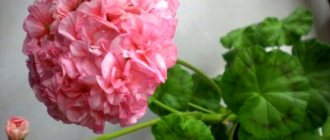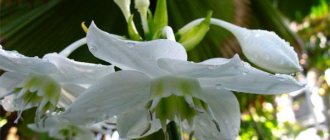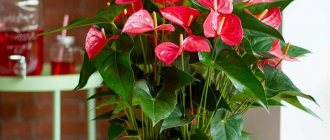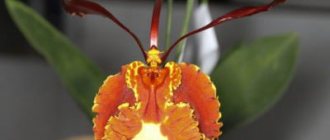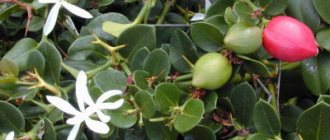Photo: domosedy.com Previously, it was believed that geraniums blooming on the windowsill of a house were a symbol of peace and harmony reigning in the family. Now such myths have gradually become a thing of the past, but flower growers still adore the beautiful and bright plant. We share all the details of caring for geraniums at home!
Choosing soil for geraniums
Geraniums or pelargoniums need new nutrient soil, more baking powder and good drainage. For young plants, take lighter soil, so you can add peat, vermiculite and perlite. For adult flowers, universal soil or chernozem mixed with sand and baking powder is suitable. The composition must be neutral or, in extreme cases, slightly acidic.
Photo: zen.yandex.ru
What is the difference between geranium and pelargonium, are there any differences in care?
In fact, the flower crop grown at home is pelargonium, and real geranium is grown in gardens. But it so happened that the indoor flower is called geranium.
Externally, geranium and pelargonium are a little similar. Pelargonium has smaller leaves that are decorated with a dark border.
Garden geranium tolerates sudden changes in temperature well, while home pelargonium prefers warm weather. Garden geranium flowers have 5-8 petals, while pelargonium has buds in the form of roses or corollas.
Plants have differences in care. Features stand out:
- geranium can grow in the shade, pelargonium prefers sunny areas;
- geranium can overwinter in open ground; pelargonium must be cared for at home in winter;
- The root system of garden geranium is developed and does not require regular feeding. While pelargonium has a fibrous rhizome and will not bloom without fertilizing.
ON A NOTE. Further, both terms (geranium and pelargonium) will be used in relation to flower crops grown at home.
Watering and spraying geraniums
It is better to water the geranium through a tray as it dries. Use settled water at room temperature, and it is important that it is not too hard. In winter, reduce watering to the required minimum (once every 7-10 days) so that the roots do not rot.
Pelargonium hardly reacts to dry indoor air, so it does not need to be sprayed. It is even harmful to the leaves because they can begin to darken and dry out. In general, this is a drought-resistant plant, so it’s always better to underwater a little than overwater.
Photo: gazonov.com
Dracaena: home care, propagation and transplantation
Nitrogen fertilizing
The soil must be neutral, air and moisture resistant. It is not necessary to place drainage in small pots. Chernozem with humus in a ratio of three to one is ideal as soil. Why do you need to put only one part of the humus? Because the amount of nitrogen is unacceptably large. Otherwise, the flower will not delight you with its lush blooms. Do not plant pelargonium in commercial peat extract. It is better that the composition always contains rich chernozem soil.
Be sure to feed geraniums with complex fertilizer. The composition must contain trace elements, the most important of which is magnesium. We select the fertilizer correctly; potassium and nitrogen should be in equal proportions. Pelargonium really likes feeding with ash; it doesn’t need to be done often, but twice a season is a must.
Choosing a location and lighting
Geranium loves fresh air, but not drafts. If you place it on a windowsill near a window, in summer it even repels insects with its aroma. Do not place the flowerpot directly next to the radiator or in the walkway.
Pelargonium is suitable for moderate lighting, but the sunnier it is, the better it blooms. In winter, we recommend using phytolamps for additional illumination for at least several hours a day. If there is not enough light, the plant turns pale and becomes smaller.
Photo: valstietis.lt
Material
Planting geraniums also requires the presence of drainage in the pot. Accordingly, the container must be made of sufficiently strong materials that can withstand such loads. Pots for home flowers are:
- glass;
- plastic;
- ceramic;
- clay;
- clay with coating (made of special glaze);
- metal;
- bamboo.
Glass pots for geraniums are rarely used, as they are more suitable for plants that require high humidity: they often do not have a hole for draining excess water. The exception is when such flowerpots are important for creating the interior design of a room. In this case, geraniums need to be watered less often and the soil needs to be loosened more often. Plastic products are quite practical and inexpensive. They are light in weight and come in a wide variety of colors, making them perfect for installation on a windowsill. Ceramic pots are also good for flowers, but they are heavier and more fragile. The choice can be made on this type only if there is no likelihood of the flowerpot falling from a height.
Fertilizer and feeding of geraniums
It is most convenient to feed pelargonium with complex fertilizers for flowering plants from late spring to early autumn. In the spring, add more nitrogen so that the flower actively grows and recovers after pruning. Phosphorus strengthens the root system, and potassium promotes the formation of buds. At home it is easier to use special sticks, granules or watering solutions.
Photo: domashniecvety.ru
Optimal time for the procedure
The time it takes to adapt to a new location largely depends on the time at which the flower is transplanted. Typically, transplanting geraniums at home is carried out in the spring. With increasing daylight hours, the plant begins vegetative processes, and it most easily perceives stressful changes. At the same time, some gardeners are guided by the lunar calendar, knowing about the reaction of plants to the movement of the night star.
The winter months are considered the most unfavorable time. Transshipment of the plant, carried out in March or April, will give the best results and be the most painless.
Note! Transplanting pelargonium into the garden, be it a royal, zonal or ivy-leaved plant variety, should occur at the end of spring, that is, in the second half of May.
You should move the flower back to your house or apartment before the onset of cold weather.
Is it possible to replant geraniums during flowering or in summer?
Geranium can be replanted at any time of the year, but under favorable conditions the plant blooms almost continuously throughout the summer. Is it possible to replant flowering geraniums?
During active budding, the bush spends a lot of resources and entails a protracted recovery period. As a result, the bush may not cope with stress and drop flowers. It is for this reason that it is recommended to postpone the transplant to another time.
Is a transplant necessary after purchase?
Many purchased flowers quickly die when they find themselves in a home environment. At the same time, the plant is provided with complete rest so that it can adapt to the changed external conditions, because in a short period of time the flower has gone through a number of stressful situations: replanting in the garden area, transportation, keeping in the store.
Air temperature
The best temperature for geraniums is around 18-20 degrees. If you want, lower it to 13 degrees at night, because in summer the plant feels great even outside. In order for the flower to accumulate strength for new flowering over the winter, it is better to lower the constant temperature to 15-18 degrees.
Photo: zen.yandex.ru
Indoor begonia: home care, propagation and transplantation
Flower pot size
One of the important conditions for budding and foliage growth is the volume of the pots. Small plants need to be transplanted gradually into a larger volume as they grow. Do not feed until we can provide the required amount of light and heat. The temperature should be above 20 degrees, and there should be at least 14 hours of daylight. Pelargonium growing on a window does not require a large pot. If it does not correspond to the development of the root system, it is useless to wait for flowering. Planting in a large pot will negatively affect the flower; it will constantly grow roots to fill the empty space.
How to prune geraniums
Pruning is the most important stage in caring for indoor geraniums, otherwise they will stretch out, become deformed and lose their decorative properties. And in the future it will get even worse. The crown needs to begin to form when the plant is still very young.
Each shoot has dormant buds, but they will not germinate while the stem is stretching upward. Therefore, they are encouraged by annual pruning in early spring. Shorten long shoots just above the leaf node, remove all shoots that grow inward, sprinkle the cuts with charcoal and feed the flower a little with nitrogen.
Small varieties are pruned less often - once every few years, and very little. Feel free to thin out the tall ones and shorten them by 2/3 - they will grow again. Geraniums of medium height can be trimmed by 1/4-1/3.
Strongly growing bushes should also be pruned in the fall so that the load in winter is less. The procedure is carried out according to the same principle, but only after the geranium has completely faded. Do not water the pot 2-3 days before and after.
Photo: mkdou19.ru
Features of the plant
Geranium is an indoor flower that is easy to grow. Its inflorescences are brightly colored and have a regular round shape. The leaves of geranium are quite large, which gives it splendor even in the absence of flowers. They have a pattern that comes in the form of stripes of a darker tone or a white border.
The flower has a pleasant aroma with notes of fresh mint and lemon. There are both annual and perennial species of this plant. But they all differ in their average water requirement, which makes caring for your home flower quite simple. Creating the right soil for a plant is not difficult. To do this, you will need ordinary soil, a small amount of special fertilizers and some ash. These components can be purchased at any flower shop and mixed according to the instructions.
Caring for a flower after planting consists of periodic watering, tearing off dead leaves and loosening the soil in the pot. To prevent the size of geraniums from constantly increasing, it is necessary to select the correct container for planting or transplanting. Not only the size of the plant, but also the number of inflorescences, as well as the frequency of flowering, depends on the correct choice of container for planting.
To decide on the type of pot, you need to know the structure of the root system of a given flower. Its types are different, but the main characteristics are common to all types of flowers. Its root system adapts well to different types of soil. In most species it has a branched form. At the end of the roots there are small thickenings designed to create a supply of water. The flower uses them only during dry periods. For this reason, indoor species are not advised to water too often.
There are also varieties with dense small roots that accumulate moisture along their entire length. Their roots are located closer to the surface. There is a third type of root system. Tubers are formed in them to accumulate moisture and nutrients. Such formations also serve for reproduction. When the main flower dies, new shoots emerge from the tubers.
The choice of pot must be made taking into account the characteristics of the geranium variety. For example, if the species being grown has roots that do not go deep into the ground, then you can plant the plant in a smaller pot. But there are other criteria for choosing containers for planting.
Propagation of geraniums by cuttings
It is most convenient to use cuttings that remain after pruning. The optimal length of the shoot is about 6 cm, and it should have 2-3 leaves. Leave it to sit for a couple of hours so that the cut area dries out, or sprinkle it with charcoal.
You can safely root the cuttings directly into a pot with light soil. Or first put it in coarse sand until the first roots appear - after about 10 days. It does not need to be covered or any special conditions created. Just provide moderate watering and make sure that water does not get on the leaves and stems.
You can leave the cuttings in a glass of water and transplant from there. Make sure that the leaves do not fall into the water, and do not forget to top it up periodically. In 1-2 weeks you will get an almost complete small root system.
Photo: ….
LiveInternetLiveInternet
Quote from ULUNA_La message
Read in full In your quotation book or community!
AND AGAIN A LITTLE ABOUT GERANIUM
Part 1 was devoted to the medicinal properties of geranium ... Now tips on caring for our beauty
SOIL FOR GERANIAS
To grow geraniums, the soil must be nutritious; a mixture of equal parts of garden soil, peat and sand is suitable. The same soil is suitable for sowing geranium seeds. When grown in gardens, geraniums prefer well-drained soils. In the fall, geraniums are dug up and transferred to a pot. When growing geraniums in pots, good drainage is required to avoid stagnation of water in the roots. Periodically, the soil in the pots must be loosened, this provides air access to the roots and prevents root rot.
WATERING GERANIA
Geranium requires regular and abundant watering in spring and summer and moderate watering in winter, since with weak vegetation the root system is easy to flood. Geraniums do not require spraying or washing the leaves. It belongs to the category of those plants that are better to dry than to overwater. All geraniums have the ability to accumulate water, so they are considered dry-resistant. When watering, it is necessary to ensure the drainage of excess water to prevent waterlogging. If a geranium receives more water than it needs, then its leaves and flowers change their appearance. If you overwater, even if the foliage is good, the geranium may not bloom.
SIZE OF GERANIUM POTS
Geraniums are grown in pots or boxes. The size of the pots is selected according to the size of the root system. The pot should not be too large - in this case it is not possible to control the growth of the plant and form the desired height. In small pots, geranium blooms better, the flowers will be more beautiful and bright, but in spacious pots the bush develops well, but blooms worse. For young bushes, select a small pot, since the roots of geraniums are small. Flower pots are changed to larger ones only when the old geraniums are already clearly crowded. If the pot is large, you can plant two or three cuttings in it. Pots for geraniums can be plastic or made of baked clay, but in plastic pots the soil dries out more slowly, so there is a greater likelihood of roots rotting, while clay pots allow moisture and air to pass through well. The optimal pot diameter for one plant is 12-14 cm and 22-25 cm for three or more plants in one pot. The height of the pot is 10-15 cm. The smaller the pot, the more compact the plant (especially true for geraniums grown from seeds).
PINCHING GERANIAS
Strengthening branching, forming a bush and crown of geraniums is achieved by pinching. Pinching is done on the 8-10th leaf if the plant is grown from cuttings, and on the 6-8th leaf if the geranium is grown from seeds. When pinching, the growing point is removed. In some cases, repeated pinching is required. There are two ways to form a bush. If, after pinching, new shoots begin to grow not from the rhizome, but from the axils of the upper leaves, they must be removed. Only axillary shoots are left below the top pair of leaves. Or another way - let these upper axillary shoots grow and after two or three pairs of leaves pinch them again. Geraniums are pinched in February-March. Although pinching enhances branching and accordingly increases the number of flowers, it delays the flowering of geraniums.
Pruning GERANIAS
At the end of February - beginning of March, geranium wakes up. During this period in the spring, it is necessary to form a crown, for which old and large stems are cut off, leaving 2-5 buds on each shoot. Cut stems are used for cuttings. It is undesirable to prune geraniums and take cuttings in December-January, as this is the most difficult period in the life of the plant. Pruning in the fall leads to the appearance of young, frail growth, which weakens the plant and it may die over the winter. Typically, geraniums grow intensively in rooms in winter, forming discolored elongated shoots that need to be cut out in early spring. To get a good bush, it is useful to take geraniums out into the open air in the summer. Pruning, as well as pinching, delays the flowering of geraniums.
FEEDING GERANIAS
Geranium responds positively to mineral and organic fertilizers. During the period of active growth, fertilizing with mineral mixtures or liquid fertilizers is used. During the flowering period, fertilizers containing more phosphorus and potassium than nitrogen are used. Such fertilizers stimulate flowering. If it is necessary to obtain abundant greenery, then fertilizers with a high nitrogen content are used. Feeding is carried out once a week from late spring to early autumn. If the geranium was transplanted into a new soil mixture, then fertilizing usually begins three months after transplantation, when the soil is depleted.
A very good feeding is iodine water: dissolve 1 drop of iodine in 1 liter of water and pour 50 ml of this composition over the walls of the pot. Don't overdo it so you don't burn the roots!
SOWING GERANIAS
Geraniums grown from seeds bloom much more abundantly than those propagated by cuttings. Up to 30 inflorescences can bloom simultaneously on a plant. Such geraniums are more resistant to low air humidity and suffer less illness. Geraniums are sowed in January-February in seedling pots or bowls. The soil for sowing is first spilled with boiling water and a dark solution of potassium permanganate. The seeds are laid out on moist soil, lightly covered with seedling soil and sprinkled with a growth stimulator. The bowl is covered with glass or film. Crops must be kept evenly moist. Water carefully so that the seeds do not go too deep, otherwise they will not germinate. Seedling bowls with emerging seedlings must be ventilated daily by lifting the glass or film and removing condensation. Seed germination time is 7-14 days; temperature fluctuations beyond 20-24 degrees are undesirable. When 2-4 true leaves appear on the seedlings, the seedlings dive. At the same time, to prevent the formation of stem rot, it is necessary to plant plants at the same depth at which they grew before. Seedlings are grown at a temperature of 16-18 degrees in a bright room, moderately fertilized. After 6-8 weeks, the plants are transplanted into another pot. Flowering occurs in mid-summer.
CUTTING GERANIA
Most often, geranium is propagated by cuttings - the fastest way to get a flowering plant. In addition, seeds obtained from hybrid geraniums do not exactly reproduce all the qualities of the parent forms. Therefore, cuttings are used much more often, which guarantees the safety of the variety; in addition, the plants begin to bloom soon after rooting. When planting seeds, the period before flowering is longer. Cuttings are rooted in February-March and July-August. The period of propagation by cuttings is due to the fact that the rooting of cuttings deteriorates at air temperatures above 25 degrees (in cold summers it can be propagated throughout the entire growing season). It is best to renew geraniums by cutting off the apical shoot for rooting with 2-3 leaves and a length of 5-7 cm. After pruning, the cuttings are withered in the shade for 24 hours; to prevent rotting of the cuttings, the cut is dipped in crushed coal, and then planted in a light mixture, deepening them by 2-3 cm and kept at a temperature of 20-22 degrees. The soil mixture must contain sand at least one third or one quarter. First, the soil mixture is scalded with boiling water and poured with a dark solution of potassium permanganate. The first watering is plentiful, then it is watered rarely and not sprayed, since excess moisture can cause rotting of the cuttings. Unlike most plants, geranium cuttings planted for rooting do not need to be covered; this has a negative effect. Rooting of cuttings occurs in about a month. It is best to root cuttings in 0.2 liter plastic cups. Transplantation into a 9-11 cm pot is carried out if there are roots along the entire perimeter of the cup. Plants grown from cuttings taken in March bloom in mid-summer, while those cut in August will bloom in the spring.
DISEASES AND PESTS OF GERANIA
The most common disease of geraniums is blackleg. This is a disease of stem cuttings; the base of the cutting turns black due to fungal infection. Such cuttings are immediately removed. Blackleg disease is caused by soil that is waterlogged or compacted, preventing drainage. To prevent blackleg disease, it is necessary to use sterilized soil. To preserve the variety, you can try cutting the plant. With a lack of light, excessive air humidity and excessive watering, geraniums may develop root collar and root rot, and pests such as aphids and whiteflies may appear. To avoid this, geraniums need to be provided with favorable conditions (light, coolness in winter with infrequent watering). When moving plants from open ground or from a balcony into a house, geranium leaves may turn yellow. After acclimatization to new conditions, the yellowing of the leaves stops. Yellowing of the leaves is possible if winter conditions are not met, as well as with a common fungal disease - rust. When rust occurs, geranium leaves become covered with yellowing spots and then dry out. Currently, there are drugs that protect plants from fungal and bacterial infections. Geranium disease - lodging of seedlings is caused by fungi that attack the roots and bases of the stems of seedlings, causing the plants to fall. To prevent seedlings from lodging, seeds must be sown in sterilized soil and not over-moistened.
GERANIUM TRANSPLANT
Young geraniums need to be replanted annually or every two years. This is done in the spring before growth begins. The pot should be small, otherwise leafy shoots will develop strongly and the plant will not bloom. If geraniums are planted in balcony boxes (after spring frosts), then the distance between them is 20-25 cm. If geraniums grew in the garden, they are dug up in the fall and transferred to a pot. If it is not possible to replant the plants, then you can annually replace the top layer of soil without replanting the plant itself. In the third year of life, it is better to replace plants with young ones grown from cuttings. Cuttings rooted in August are left for the winter without transshipment. In March-April they are transferred into 9-11 centimeter pots. If the geranium grew in the garden, in the fall, before frost sets in, it is brought into the house. The roots of the plant are shortened and placed in a pot with good drainage. The tops of the shoots of the plants are cut off.
LIGHTING
If there is not enough lighting, then geranium reduces its flowering, its leaves and flowers lose their brightness. If the geranium is indoors behind glass, then direct sunlight is harmful and can cause burns, but outdoors in the open sun the geranium can easily tolerate them. In winter, geraniums need lighting with fluorescent lamps or phytolamps.
Thanks for the text to justlady, domohozjaiki , pelargonium photo sources HERE
Part 1 about geranium was HERE
GOOD DAYS
Other ways to propagate geraniums
It is worth propagating geranium by dividing the bush only if you still need to plant it. It is better to do this during transplantation. Carefully separate the area with healthy stems and buds and plant it separately. After this, the main thing is not to over-water the flowers. It is better to carry out the procedure in the spring, when there is more sun and it is warmer.
Growing geraniums from seeds does not make much sense, because hybrid varieties lose their parental properties. The seeds must be scarified because their skin is too thick. Shoots appear in 2-3 weeks, although sometimes this takes a couple of months.
Photo: domashniecvety.ru
How to grow an avocado from a seed at home
Types and varieties of pelargoniums
The genus Pelargonium belongs to the order Geraniaceae, family Geraniaceae. There are up to 180 representatives of this fragrant genus in southern Africa. Less than a dozen have taken root in the apartments:
- zonal geranium is a textbook example from Soviet botany textbooks. Found most often in homes, it has leaves with a crenate edge and bright, often red, white or pink flowers;
- fragrant geranium - has dissected light silver leaves with a very pleasant smell of citrus and mint. The flowers are small. The species is remarkable in that it is possible to develop varieties with the scent of lilac or rose, as well as nutmeg, and even pepper. It is bred for the needs of the perfume industry.
- royal, large-flowered geranium (P. grandiflora) - distinguished by huge pom-poms of flowers. Leaves with toothed edges;
- ivy-leaved pelargonium is the collective name for ampelous species. Popular in Europe, used for garden arches and other flowering structures. Even more thermophilic than zonal;
- Pelargonium-angel (Angel's Eyes) is a low-growing hybrid of domestic geranium and wild African one. Its flowers look like violets;
- unique pelargonium is a hybrid of fragrant and royal geraniums. It has a strong aroma of leaves and large flowers;
- Pelargonium succulents are not yet widespread, but they are valuable material for, for example, alpine slides. They began to be cultivated relatively recently.
Pelargonium received its common name “geranium” from its fellow member of the Geraniaceae family – Geranium silvaticum. Real forest geranium is a frost-resistant perennial, inhabitant of forests in the middle zone and taiga zone. And the southern pelargonium freezes even in Tajikistan.
The appearance of indoor (garden, zone) geranium is a branched subshrub. The plant is perennial, but is often cultivated as an annual because the shoots of the current year bloom more abundantly.
The root system of pelargonium is fibrous and compact. Well developed and adapted to dry conditions.
The leaves are characteristically round in shape, with a darker reddish ring-shaped area. The venation is palmate. There are varieties with a white border on the leaves (for example, Madame Butterfly), they were popular in the 60s and were called “whitefly”. The leaves may be completely purple.
The inflorescence of geranium is an umbrella, its appearance is well known. Various varieties have both simple and dissected or double flowers. The diameter of the flower is approximately 2 cm, and the entire inflorescence reaches 15 cm in diameter, and in royal pelargonium it is up to 20 cm. The main range of colors of geraniums is in the red spectrum, from dark burgundy to white. Varieties with purple and lilac flowers have been developed. The only thing missing so far is the yellow tints.
The pods with ripening seeds resemble the head of a stork, hence the name of the genus - pelargonium, translated from Greek - “like a stork”. In old Russian books on home economics, geranium was called “crane tree” or “crane nose”.
Ripe fruits have a spirally twisted cord that responds to changes in humidity and temperature, unwinding and curling like a spring. Using this tourniquet, geranium seeds are buried in the soil. In old natural history textbooks you can find a method for making a barometer from a geranium seed.
Transplanting geraniums
Pelargonium is replanted when the pot has become too small for the bush. And also - after damage or waterlogging of the roots, or in order to bring street flowers into the house for the winter. To move the plant with minimal damage to it, use the transshipment method.
First, drainage made of expanded clay, broken brick or similar materials must be placed at the bottom of the pot. To make it easier to get the plant out of the old pot, water it well. Place it in a new container with the entire earthen lump and fill the empty edges around with new soil. It is better to do the first full watering after four days.
Photo: asiaplustj.info
Step-by-step instructions on how to make your own container for planting
From cement
The cement pot is not only original, but also very durable.
To work you need:
- cement;
- sand;
- two plastic containers of different sizes;
- perforator;
- dishes for mixing the solution;
- a few stones for weight.
- Clean containers are lubricated with oil, smaller ones on the outside, and larger ones on the inside. This will help prevent excess cement from sticking to the forms.
- A mixture of sand, cement and water is prepared, placed in a larger container, and a smaller container is inserted inside. The thickness of the walls of the future pot depends on the difference in the sizes of these vessels.
- A weight is placed inside a small container.
- This cement mortar dries in 2 days. After this, the plastic containers are cut and the finished product is freed from them.
Let's watch a video on how to make a cement pot:
From plaster
A plaster pot is made in the same way as a cement pot.
- gypsum;
- water;
- two plastic containers of different sizes.
- Take a larger container, pre-greased with oil, and place a smaller container inside.
- The prepared gypsum solution is poured.
- Within 2 days, the solution dries and hardens, then the plastic containers are removed.
- Drainage holes are made at the bottom. The plaster pot is ready.
Let's watch a video on how to make a pot from plaster:
From aluminum cans
You will need 0.33 or 0.5 ml carbonated drink cans. Aluminum is not afraid of rust, is durable and quite strong, it is a good and cheap option.
- Use scissors or a knife to cut off the bottom of the cans.
- The remaining tongue covers the neck hole, but not tightly.
- A little drainage mass is placed at the bottom of the resulting container.
Alternatively, the most unexpected objects can become flower pots. So, porcelain and earthenware can easily turn into excellent containers for plants. Enameled dishes are also suitable for planting flowers, and unnecessary old pots can serve as flower pots.
The pot for the plant directly affects the durability and quality of flowering. That same “ideal” pot, which fully meets the needs of indoor geraniums, is guaranteed to ensure the correct development of the flower. You should not skimp on this important accessory for geranium life, otherwise subsequent problems may result in wasted time and additional expenses.
The current assortment of flower shops and these tips on choosing a pot will easily help you choose a good container for geraniums. It is also important that the pot does not overshadow the beauty of the flower and does not take on undue attention.
If you find an error, please select a piece of text and press Ctrl+Enter.
Diseases and pests
Pelargonium is resistant to diseases and pests. Geranium leaves have a specific smell, so insects rarely attack it. However, problems can still arise.
Blackleg
A viral disease that manifests itself as blackening of the stems. This type of disease cannot be treated, so it is necessary to remove the plant.
Root rot
Occurs with frequent watering. When affected by the disease, the bush becomes weak, the foliage turns yellow and falls off.
To eliminate the problem, the bush must be transplanted into a new substrate. After transplantation, the plant is not watered for several days.
Pests
Geranium can become infected with pests such as aphids and spider mites. The drug Aktara or Strobi is used for treatment.
What signs are there associated with geranium?
Since ancient times, geranium grown at home has been accompanied by the following folk beliefs:
- bushes with red flowers strengthen family ties;
- geranium is placed in the bedroom if the couple wants to conceive a child;
- if geraniums do not bloom in the house, this may indicate that the housing has been damaged due to financial failure.
Geranium is a popular type of houseplant. The variety of colors allows you to choose the appropriate variety depending on the interior of the room.
Answers to frequently asked questions
Can geraniums cross-pollinate?
Yes, when growing several varieties on one windowsill, you may notice that the buds change color. As soon as the buds fade, the plant restores its varietal characteristics.
Is it possible to use organic matter to feed pelargonium?
No, pelargonium does not tolerate organic feeding well. For abundant flowering at home, you need to use complex fertilizers.
